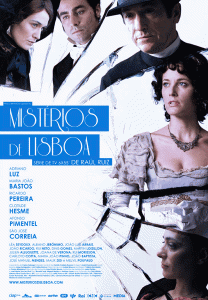Written in October 2011 for the Blu-Ray released by Music Box Films. It seems like the gift of Ruiz never stops giving: a film cosigned by him and his widow Valeria Sarmiento suggestively called The Wandering Soap Opera turned up on a few South American ten best lists for 2017 as well as MUBI. — J.R.
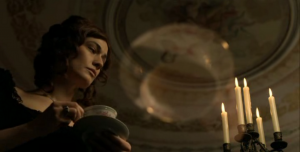
It was disconcerting to see a passage from a 1997 article of mine about Raúl Ruiz (1941-2011) quoted in some of his mainstream obituaries: “Ruiz is the least neurotic of filmmakers; he doesn’t even seem to care whether what he’s doing is good or not.” Not because this was false when I wrote it but because it related to my earliest encounters with his work and its seeming challenges to film commerce, not to his better known big-budget efforts such as Marcel Proust’s Time Regained (1999) and Klimt (2006).

This is why some of these latter films disappointed me, pointing towards what Ruiz himself frankly described to me in a 2002 interview as a “capitulation”. But Mysteries of Lisbon shows that he may have gained as much from these bigger budgets as he lost, and I’m not speaking about pocket change. What he actually broadened was his film vocabulary, especially his employments of long takes and camera movements. Over the course of well over 100 films, in English, French, Italian, Portuguese and/or Spanish, shot on separate continents over four decades, runs the continuing question of how we position ourselves in relation to a story being told. Whether Ruiz’s working model happens to be Orson Welles or Richard Thorpe, Robert Louis Stevenson or Jorge Luis Borges, the usual strategy is to keep us shifting and guessing.
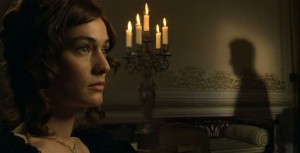
The challenge of adapting Proust may have clouded this issue, especially when it converted his novel into a theme park. But Ruiz’s “capitulation” also enriched his aesthetics while complicating some of his earlier indifference towards success or failure. Despite his soft-spoken, laid-back manner, he remained a radical both as an intellectual and as a director, and, as with Godard, could be as creative in interviews and written texts as in his films, meanwhile remaining a devout believer in both popular cinema and the avant-garde. His ongoing quarrel with what he called the “central conflict theory” behind American-style dramaturgy — which once led him in his early 20s to quit the University of Iowa’s writers workshop program, following the suggestion of his advisor, Kurt Vonnegut, Jr.—eventually became the basis of the first chapter in his Poetics of Cinema (1995), and one of his avowed motives for working with serials like Mysteries of Lisbon was their avoidance of “central” conflicts.
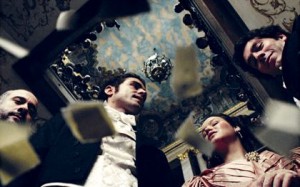
The literary figure behind Mysteries is Camilio Castelo Branco (1825-1890), who authored over 260 books—and, according to James Naremore, “was the first Portuguese writer to live entirely by his pen”. Castelo Branco had an illegitimate birth and became an orphan soon afterwards, granting him from the outset some confusion about his identity that seems echoed in Pedro de Silva, the young hero of Mysteries of Lisbon (1854), one of his earliest books. This three-volume novel seems quite different in structure, tone, and orientation from the same writer’s much slimmer Doomed Love (1862) — the source of Manoel De Oliveira’s eponymous 1979 masterwork, which immediately preceded Oliveira’s long association with the great Paulo Branco, producer of most of the great films of both Ruiz and Oliveira (not to mention key features by Chantal Akerman, Pedro Costa, and Wim Wenders). This makes it all the more pertinent that Castelo Branco’s near-namesake launched this particular literary adaptation, and hired Carlos Saboga to write it, before Ruiz stepped in to direct it. (In fact, before Ruiz died, he and Paulo Branco, who made over 20 films together, discussed adapting another Castelo Branco novel that follows one of the major characters in Mysteries, Father Dinis, as a soldier in Napoleon’s army.)
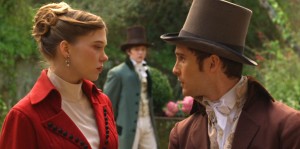
For all the apparent differences between their source novels, Oliveira’s Amor de Perdicao and the theatrical version of Os Mistérios de Lisboa both run for about 260 minutes (the TV miniseries version of Mistérios is about 100 minutes longer). But the former might be described as a modernist and exhaustive representation of a novel. Ruiz’s masterpiece is a masterful and selective retelling of one, bridging the popular and arcane strands in his oeuvre with fluidity and assurance.
The long takes and camera movements that bigger budgets made more viable became an important part of his style. (In an interview, Ruiz also remarked that the digital Panavision Genesis camera used on Mysteries “completely alters the meaning of direction,” practically eliminating the need for close-ups and representing a return of cinema to more theatrical techniques.) The challenge of his work as a whole while crossing so many boundaries is the way it obliges us to keep repositioning ourselves, and this is precisely, in fact, what his camera movements do.
As I once wrote of Ruiz’s Proust film, “not only camera movements but the gliding displacements of objects and characters [re-create] some of the complex, winding journeys of Proust’s sentences. At a climactic concert at a party, rows of listeners can be seen gliding off in separate directions as if on separate mind journeys, and in a much earlier surreal sequence featuring newsreel war footage in a cafe, the narrator, reading a letter, can be seen rising with his chair like a film director seated on a crane, all the way to the top of the room, where he encounters his own childhood self running a projector…” In a comparable way, it’s Pedro on his deathbed — after over four hours of picaresque adventures and labyrinthine plot twists, either encountering or imagining himself as a child — that bookends Mysteries of Lisbon. Ruiz himself was explicit in his interviews about it being an ending that offers the viewer several choices, none of them exclusive.
Many of the camera movements in Mysteries are mysteries themselves, plotted in and around the mutable aristocratic characters, and sometimes implicitly suggesting the inquisitive and/or critical viewpoints of servants. This in effect deepens as well as sharpens Ruiz’s inquisitive skepticism about narrative itself — as well as which class it can sometimes belong to. And where we choose to position ourselves in relation to all this mystery becomes, of course, part of the experience.
